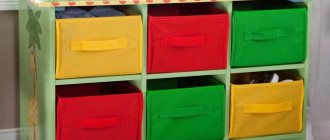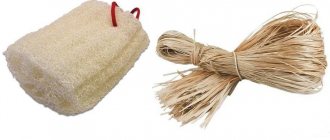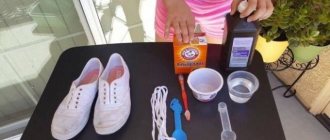After a long walk in the rain or sleet, shoes need to be thoroughly dried. Many people simply place their boots on the radiator and leave them to dry. But such drying will not bring anything good. The fact is that extreme heat causes shoes to warp, and often the soles begin to peel off . This is why wet boots need to be dried properly. In this article we will tell you some interesting options on how to make a shoe dryer with your own hands.
Advantages of a homemade dryer
Electronic goods stores can offer each customer a huge collection of ready-made electrical installations for drying shoes. However, homemade designs have a lot of advantages in use:
- The ability to independently adjust the shape and size.
- It can be built from a wide variety of materials, which are sure to be found in the household of every zealous home owner.
- Dry shoes quickly, but without direct exposure to high temperatures.
- Prevention of the formation of pathogenic fungus and long-term treatment of foot diseases in the future.
Most electric and simple shoe dryers are compact in size, occupying a small area in the hallway.
The advantages of choosing homemade designs include a large number of available instructions on how to make a shoe dryer with your own hands, video lessons and diagrams for work.
How to properly dry shoes at home using technology?
It is easy to find many devices in stores that help dry even products made from capricious materials. A hair dryer, battery, and fan are also used for this purpose.
Special shoe dryers
There are the following types, thanks to which you can properly dry your shoes in winter or after rain:
- Electric dryers. The most budget and simple option. Effectively used for skin, membranes, fabrics when using a gentle regime. The boots are put in order in a short time.
- Fan dryers. More complex device. You will need to connect air ducts. They provide air supply from the coolant. They operate on batteries and from the mains, so they are used not only in the apartment.
- Ultrafilt. This is a 2 in 1 blow dryer with an ultraviolet lamp. This type will be the most expensive, but can even prevent the formation of fungus.
Before purchasing an electric dryer, you should consider a number of nuances:
- The material of the device should look high quality. Its parts fit tightly. There are no cracks, glue, play or burrs. The power cord is flexible, not very thin. Double insulated and protected at the base.
- It is better to give preference to a ceramic heating element. The process will take place carefully and with maximum speed.
- There are holes on the body that allow air circulation. In this case, the product dries quickly.
- Usually information about the heating time of the device is in the instructions. It is better to choose a device that heats up in a quarter of an hour. If the process lasts more than half an hour, this is too long for the dryer.
- It is worth buying a device with a heating temperature of no more than 50-60 degrees. Otherwise, the boots will be damaged and energy consumption will be high.
Heating batteries
It is recommended to dry shoes without a battery from the inside, leaving them at room temperature. Rubber boots can be placed on it with a rag underneath. This option is prohibited for products made of genuine leather and fur. Otherwise, you need to place your shoes 50 cm away from the heating system. Do not lean directly against the battery.
Fan
Using a room fan will help you get your boots in order faster. The process will require s-shaped wire hooks. They need to be attached to the grill of the device, then the shoes should be hung on them. Thanks to this method, you can dry a wet product in four hours.
Clothes dryer
This option is considered the most suitable for drying sports boots after washing. It is important that the sneakers are made of synthetics or cotton with soft soles. They need to be pulled out after about an hour. It is necessary to pay attention to the operating instructions.
Hairdryer
If you need to get your boots in order quickly, use a hairdryer. You need to direct the air to the inside. The process is quite difficult, but it will dry the product in 1-1.5 hours. It is necessary that the air stream be cold - a hot one will lead to deformation.
Requirements for a homemade dryer
Any home structure, especially electrical, must meet a number of requirements:
- Compact size and convenient shape. The upper platform must have a flat surface or a fixing part to hold boots, sneakers, and shoes in one position.
- When installing electric dryers, you should take care of safety in advance. The user should not have direct contact with the electrical network to avoid thermal burns.
- You should also consider the location of the electrical installation in order to limit the child’s access to it as much as possible.
All assembly work should be carried out according to a previously prepared drawing, so as not to make gross mistakes and not to disrupt the electrical circuit of the device.
Master classes on making a dryer
Today there are a huge number of ways to assemble an original dryer for outdoor shoes: from the simplest to complex electric models. Such devices can be used for one pair or intended for several wardrobe items (large drying shelves).
At home, you can create not only complex devices, but also simple design models. For example, wooden or plastic dryers with a built-in hairdryer (through a hollow pipe system) are especially popular.
These can be accessories without additional supply of hot air or water. Such models are simpler to implement, however, the process of drying shoes takes a long time (and the quality of the material suffers).
Simple battery dryer
It is better for novice craftsmen to give preference to the simplest model of a shoe dryer for a radiator, made with their own hands. A similar design is a grille or mesh that is installed on a heating battery.
To make it you will need fittings, an angle grinder, and welding. An excellent solution would be to first draw up a drawing, which necessarily shows the location of the support posts, fasteners for the battery, and a net for drying shoes. The structure is assembled by welding adjacent parts.
At the same time, it is important to strive for the distance from the heat source to the grill to be at least 15 cm. At this height, moisture evaporates uniformly from the fabrics of boots, boots, and sneakers without deformation.
Popular manufacturing companies
Shoe dryers are produced by companies that specialize in small household appliances. To understand which is the best of the entire range of dryers, it is important to calculate how often it will be used and what is expected of it in terms of functionality. The following companies produce high-quality devices:
- NanoPad is a brand that produces household electrical appliances and car accessories. The brand specializes in low-price devices, which means everyone can afford equipment from this company.
- Velikiye Luki – the Velikiye Luki plant for the production of electrical appliances is ready to offer home appliances. Products for the kitchen and personal hygiene from this company are especially popular.
- VLK is a company that produces technical devices, related products for home care and clothing. The company was founded in 1993 in northern Italy, in the province of Trentino-Alto Adige. For more than 20 years, VLK has been offering ironing systems, steam generators, steam cleaners, and steamers. The quality of VLK is highly appreciated all over the world.
- Xin Teng is a Chinese company that specializes in the production of small household appliances. Product prices allow everyone to choose the right model.
- Timson is a company with 20 years of experience in the Russian market. The company's products undergo strict certification, and therefore the brand guarantees a quality product. The range contains a large number of innovative and multifunctional solutions.
- Therm-ic is a manufacturer of technological clothing and related heated products. The company's products are especially popular among lovers of tourism, hiking, and winter fishing.
Electric pipe dryer
A more complex version of the electric dryer is also available for self-assembly. To work, you will need to prepare corrugated pipes, a stationery knife, heat-resistant glue, wires, and electrical tape.
To install the power supply, you need 2 coolers, a power supply (a 12 V unit is enough), and a cardboard box of the appropriate size. Instructions on how to make an electric shoe dryer with your own hands:
- Assembling the power supply begins with installing the coolers on the bottom of the prepared box. To do this, you can cut two holes of the appropriate diameter and attach the coolers with glue.
- You will also need two holes in the side walls of the box. Corrugated pipes are passed through the prepared holes.
- The next task for the master is to connect the wires. It is important to ensure that when the coolers are operating, air enters the box and is forced into the pipes.
A stand of any shape and size is made from corrugated pipes. They complete the work by connecting the pipes coming out of the box to the finished rack.
What do we need for the plane?
All components are required, if one of the components is missing, your plane will not fly, and as for the weight of the aircraft, it should be no heavier than 700 grams, so none of the components should be replaced with another, since the ones listed below are fully tested and give a very light weight.
- Set of inexpensive HobbyKing Donkey S3007-1100kv motor and regulator (thrust about 920 grams);
- Battery Turnigy 2200mAh 3S 20C Lipo Pack (enough for 20 minutes of flight);
- Receiver transmitter Hobby King 2.4Ghz 6Ch V2 (range of about 1 kilometer, provided that there is no interference nearby);
- 4 servos (designed to control flaps, etc.);
- Propeller 9×5;
- Ceiling tiles (foam plastic).
Below you will see what the components look like...
In general, all this will cost you 3,000 rubles. A motor with a regulator costs about 600 rubles, a receiver-transmitter costs about 1,400 rubles, a propeller costs 100 rubles, servos cost 89 rubles each, and a battery costs no more than 600 rubles, although it all depends on which store you order all this from.
Popular articles SMS congratulations on March 8th. How to congratulate women on March 8 in an original way
I would recommend purchasing these components from the online store parkflyer.ru as they have the lowest prices. As for the ceilings, they cost 5 rubles each and can be found in any hardware store.
Water shoe dryer
The latest innovations that can be built at home include a water dryer for outdoor shoes. Instructions on how to make an original and practical heating dryer for shoes with your own hands:
- A section of profile pipe is soldered into the general system through a fitting.
- The pipe is carried to the location of the structure.
- The next step is to install the tap or valve.
- Now it is necessary to organize a closed circuit, for which the pipes are laid in parallel rows and then the ends are soldered (the heating circuit is closed according to this principle).
The final stage is bringing another profile pipe to the soldered section with a fitting. A DIY water shoe dryer has many advantages over other well-known models.
If you need to dry your shoes, just open the valve and let hot water flow through the additional channel. All the advantages of such a model can be appreciated in the photo of a handmade shoe dryer.
Now
The main module of a compact shoe rack is a cabinet for storing out-of-season shoes (item 1 in the photo) with compartments for shoes without high tops and with tops/tops. The first ones are usually made 3 (spring, summer, autumn), and one high, but those living outside the city need 4 low and 2 high compartments; “extra” for placing work shoes. They will not hurt in the city, for children's shoes.
A shoe rack in the hallway is complemented, if there is enough space, with a bench or banquette for ease of putting on/taking off shoes. It is advisable to make openwork shelves under the seat for drying shoes (item 2), but in general it is better to dry shoes, especially for country residents, in a separate dryer, see below.
If there is very little space, you can get by with a pouf instead of a bench. A single owner can fit shoes out of season under his seat (item 3), but the conditions for storing them in this case are not entirely favorable. It is better to keep shoe care accessories in a pouf (see the drawing on the right), and place the supply of shoes in a separate organizer, see below. If the now unnecessary shoes are still in the pouffe, its drawer for ventilation should be equipped with holes in the bottom, and vents should be cut out under the seat.
The width of the pouffe seat and a regular bench is approx. 400 mm. In a narrow hallway with them there is less room for passage than ergonomics require, and even a hanger with clothes is right there. Therefore, the so-called petal shoe racks (item 4); shoes are stored in them in a vertical position on the shelves of folding trays, reinforced between the sector rotary sidewalls - petals. It is possible to make a petal-type shoe rack with a width of 250-260 mm: sitting down is enough, and in the hallway 1.25 m wide there is a passage of approx. 1 m, which is acceptable. In addition, the petal shoe rack provides good ventilation of the contents both with closed and open trays. And if you fold down the tray, the shoes dry in it better than on the shelves under the bench.
Due to their compactness and large capacity, petal shoe racks are often combined into monoblocks with other pieces of furniture for the hallway. A common option is a bedside table in the hallway with a shoe rack, pos. 5. With dimensions in plan (600-800) x (250-270) mm, it can accommodate the everyday shoes of a small family. If there is enough space (approx. 1.1 x 0.4 m in plan), the monoblock is supplemented with a seat (item 6).
If there is an unoccupied corner or niche in the hallway (which is not uncommon in old houses), then it is convenient to store shoes here in a carousel shoe rack, pos. 7. Dividing the contents into 4 seasons in the carousel shoe rack is achieved in the most natural way. To store winter shoes (boots, ankle boots), the shelves are partitioned asymmetrically, see fig. on right.











